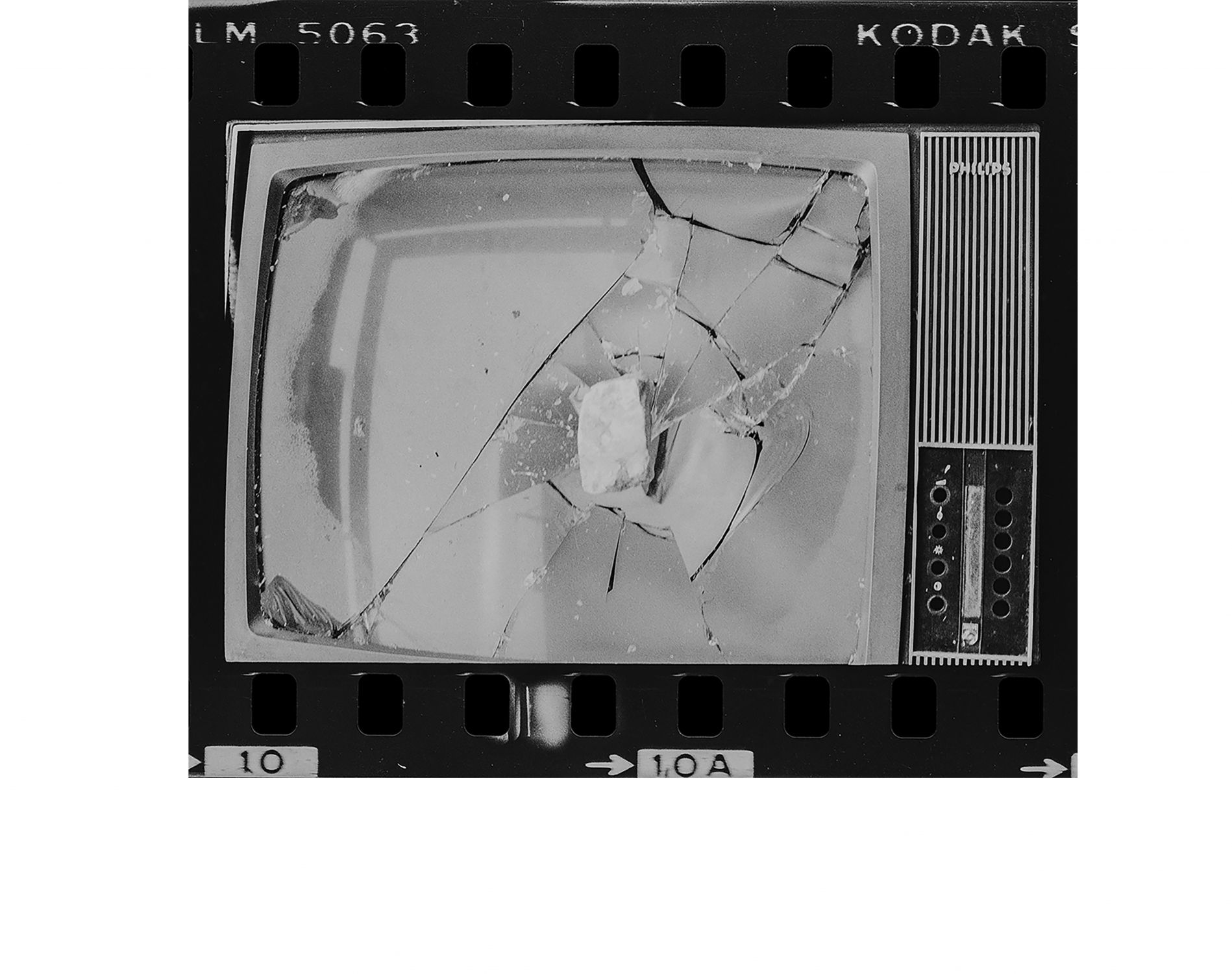Fallen
Helen Pynor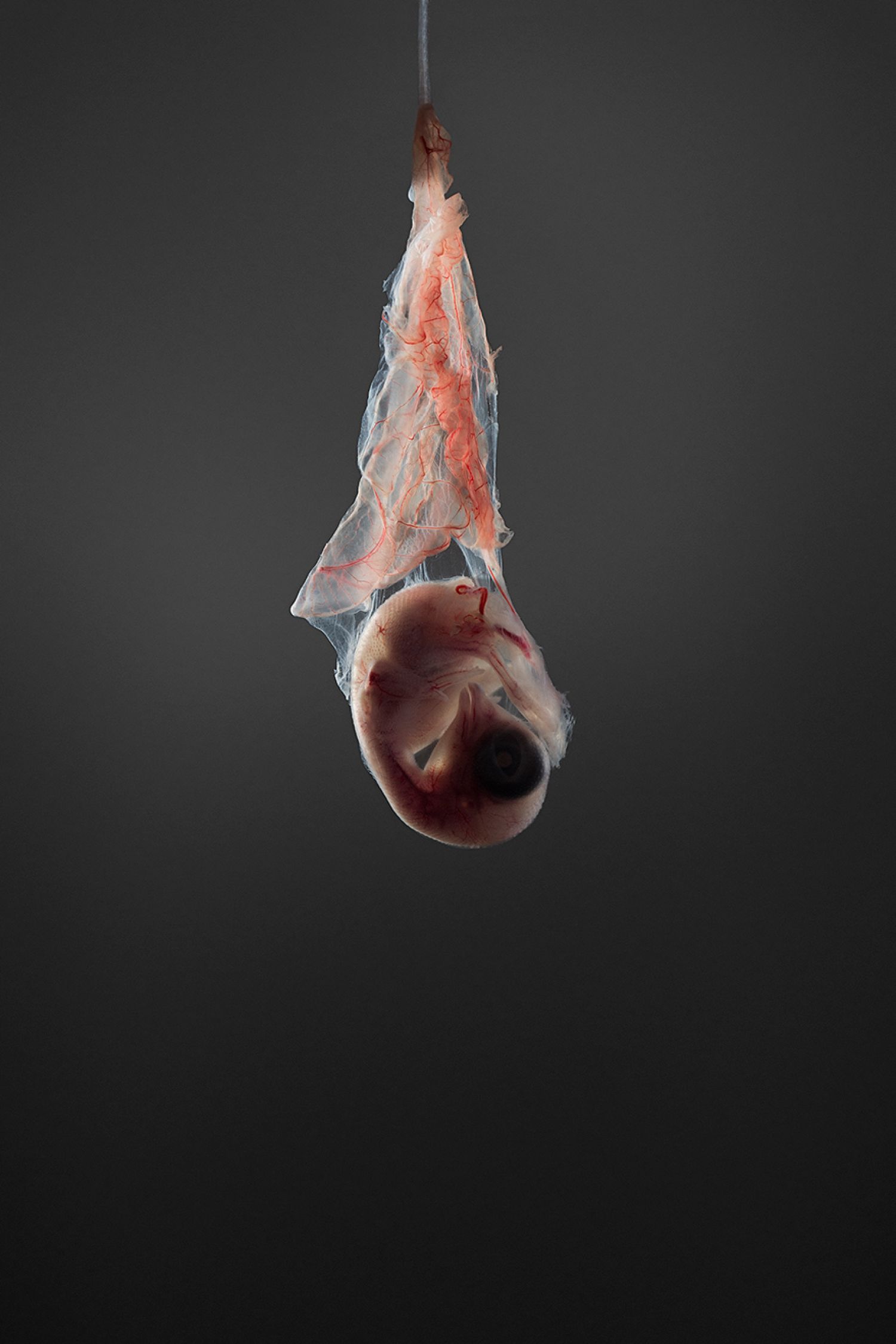
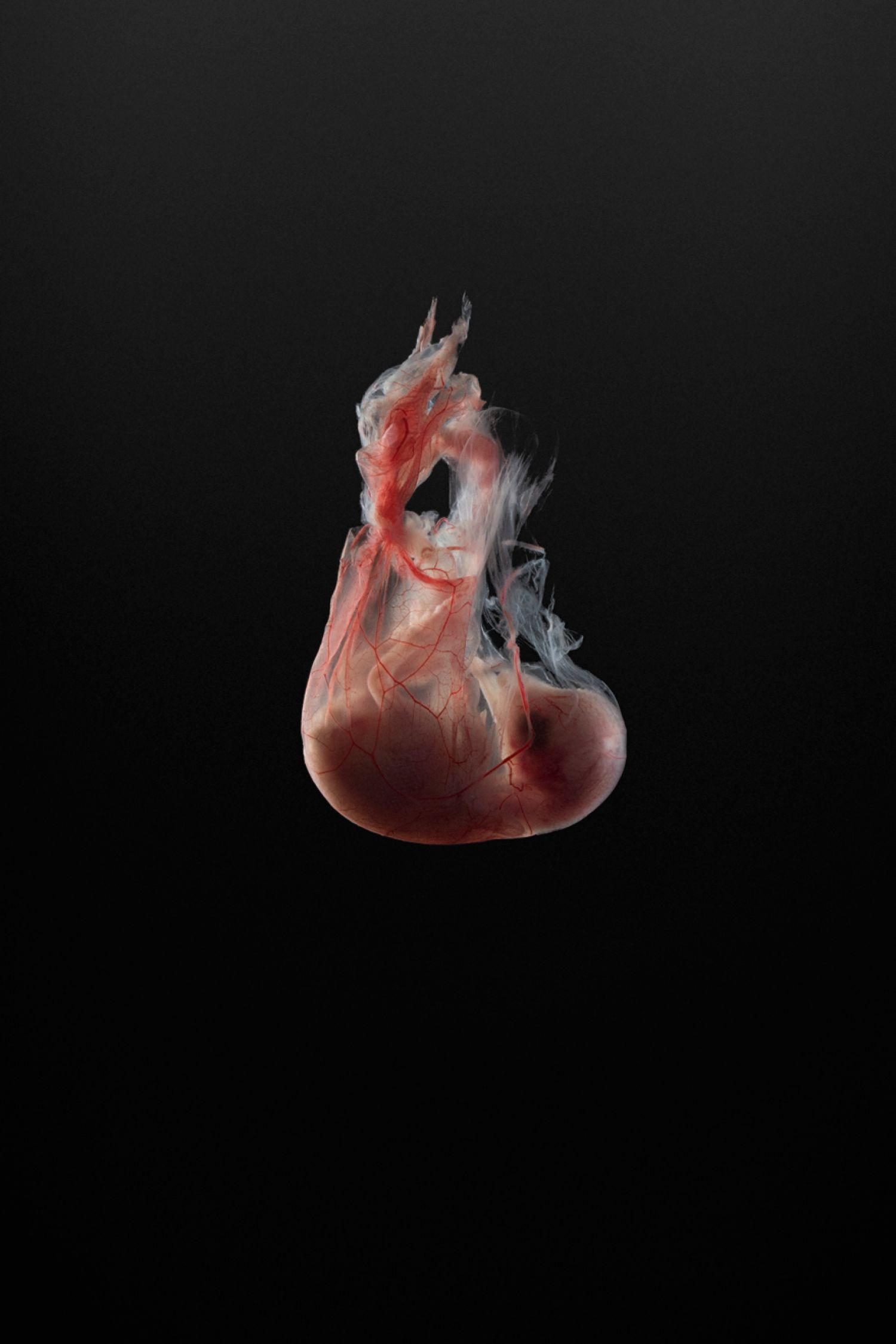
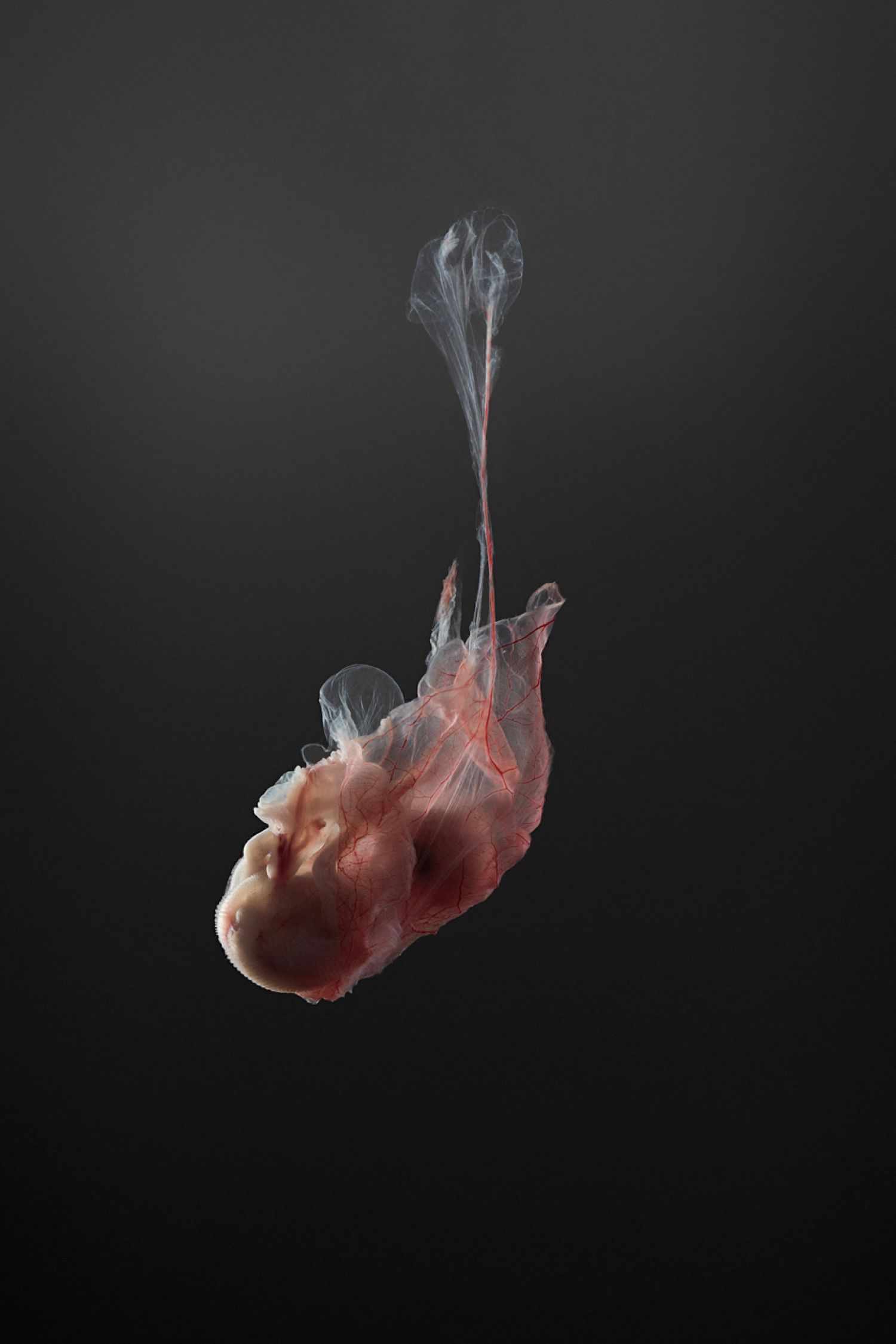
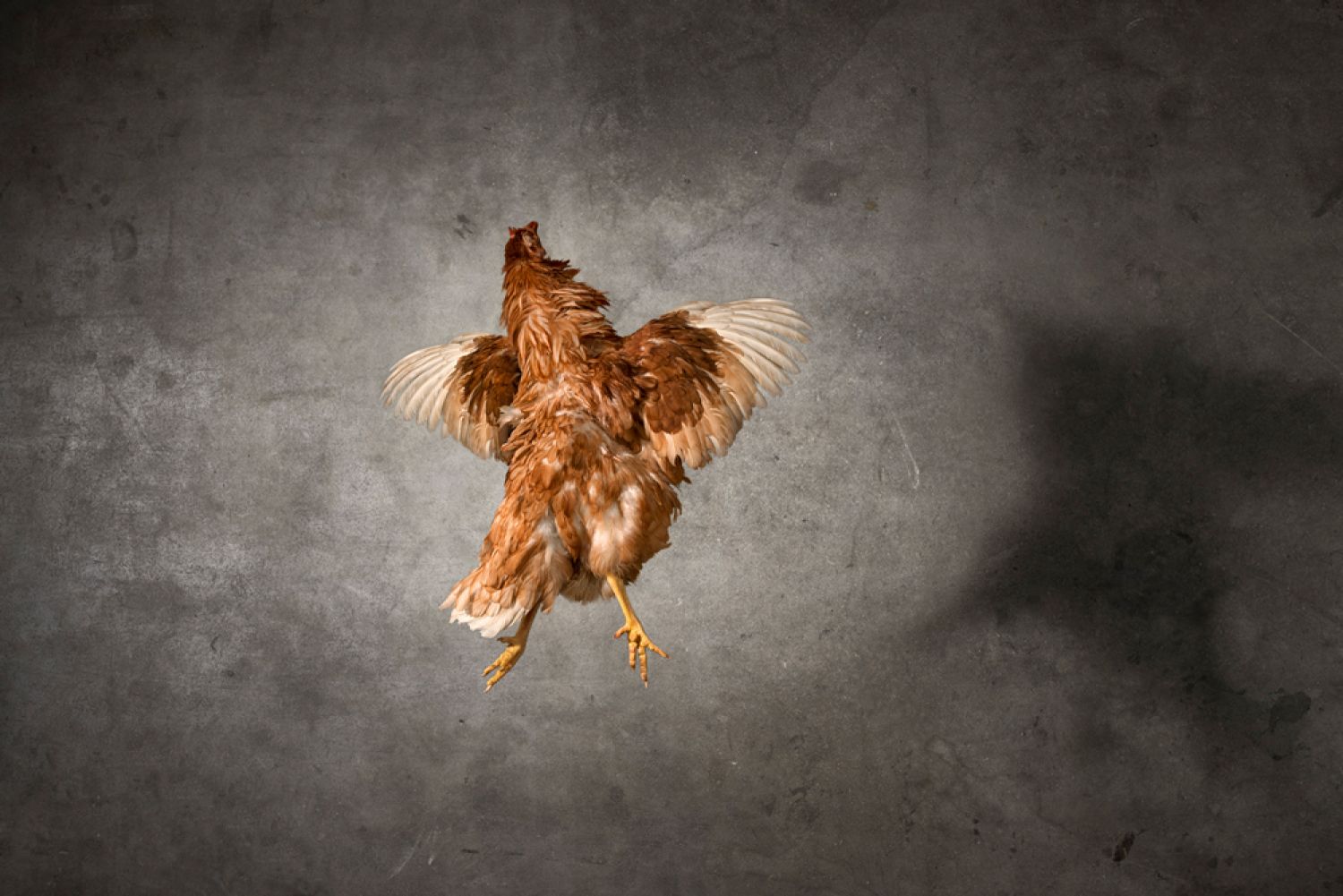
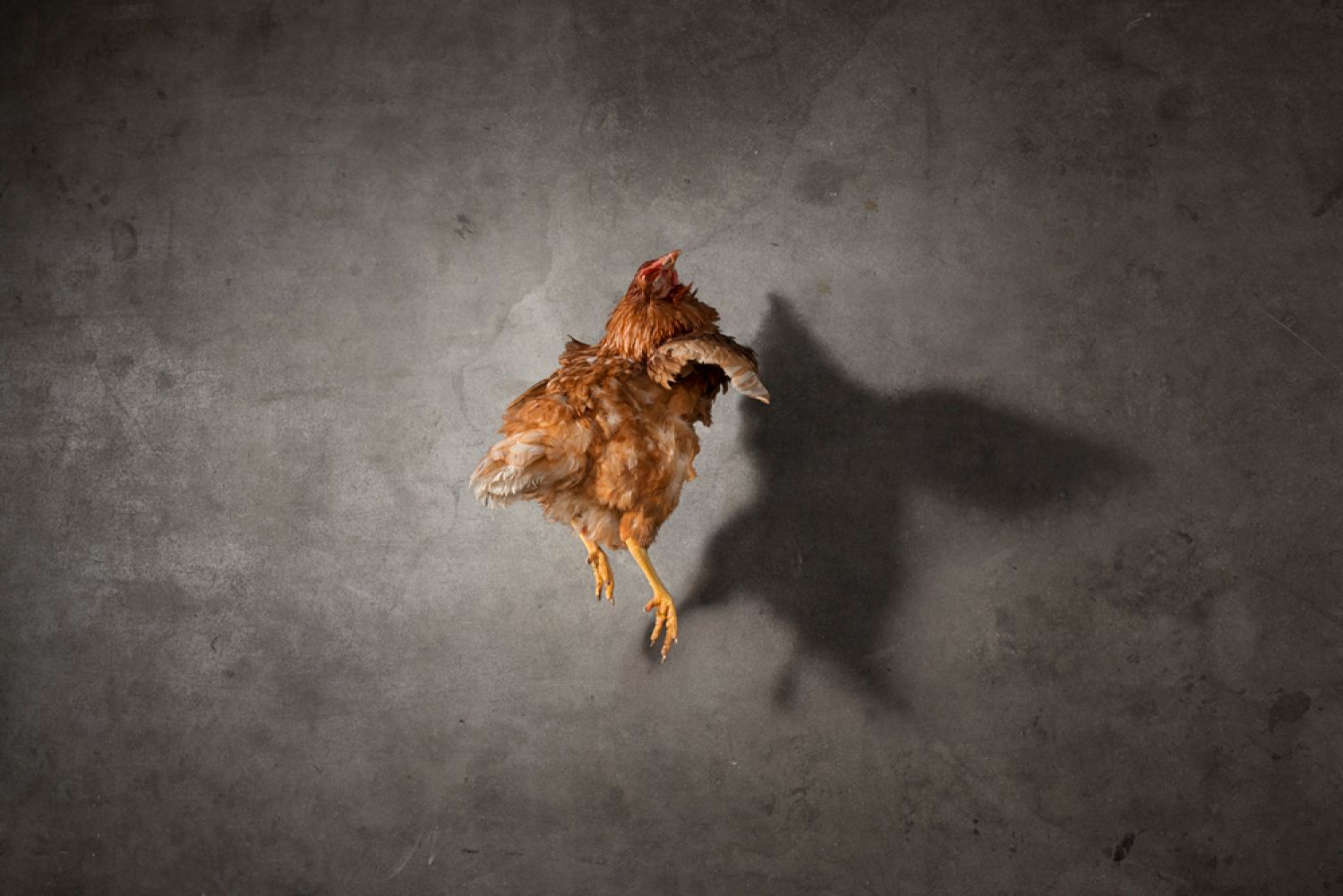
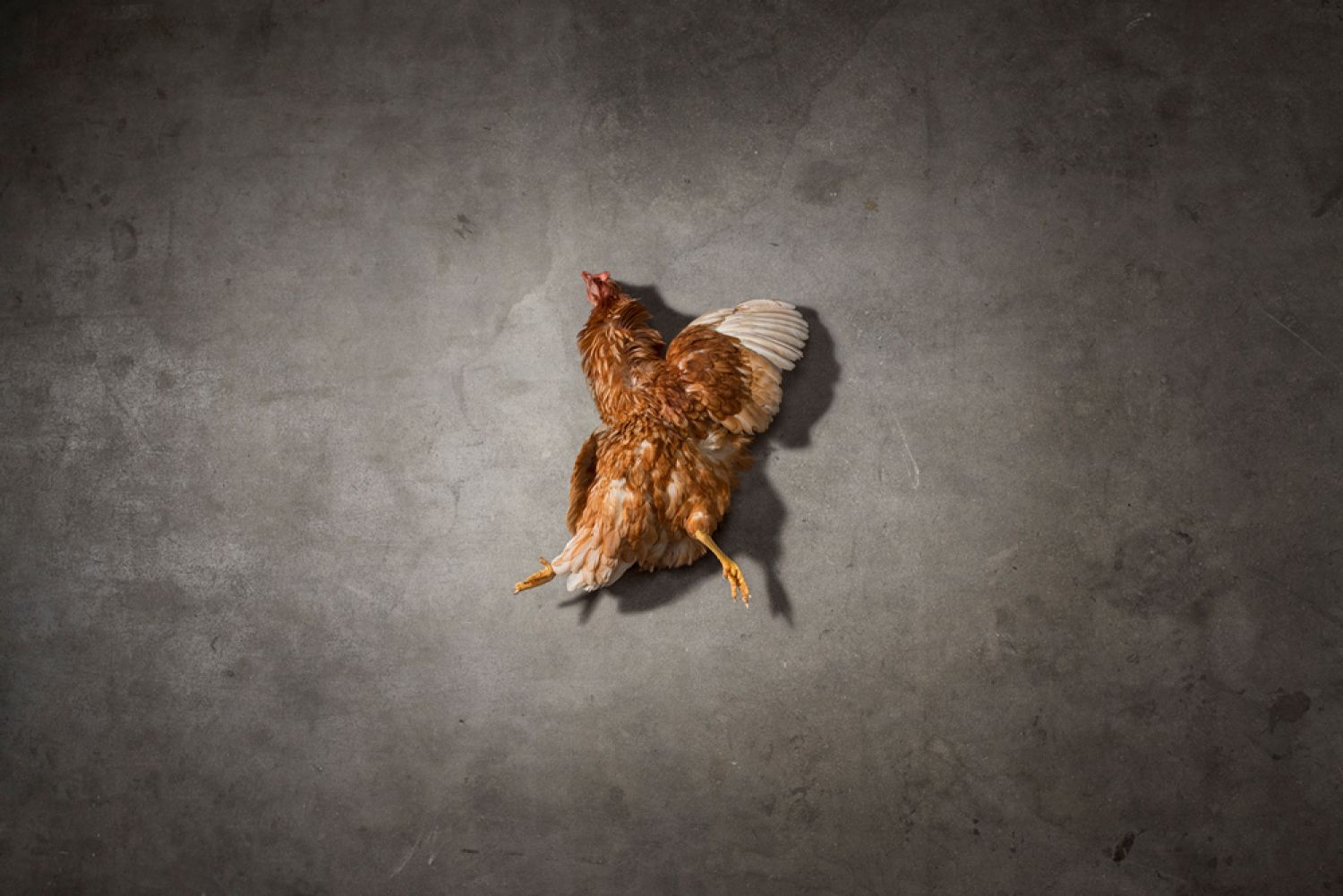
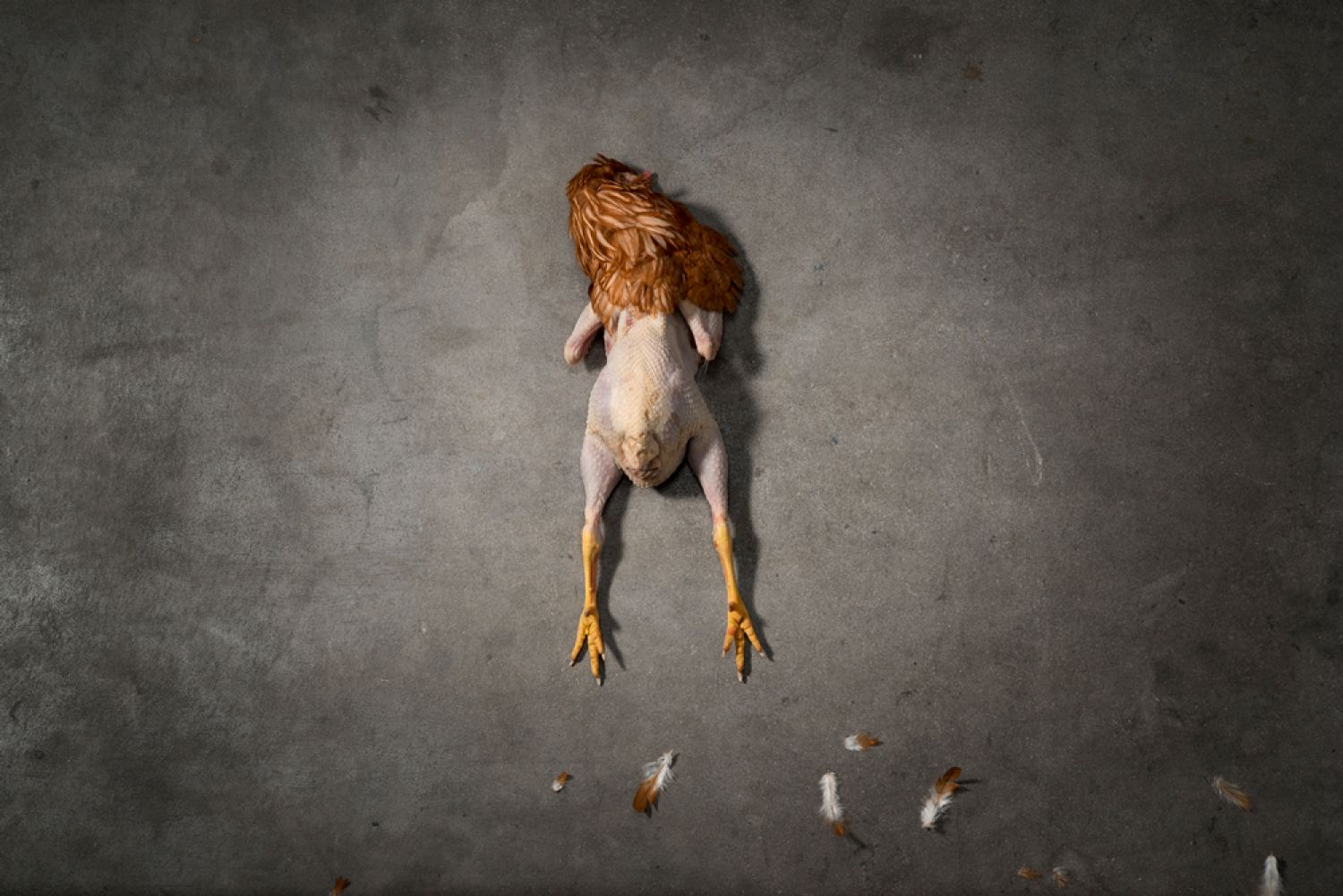
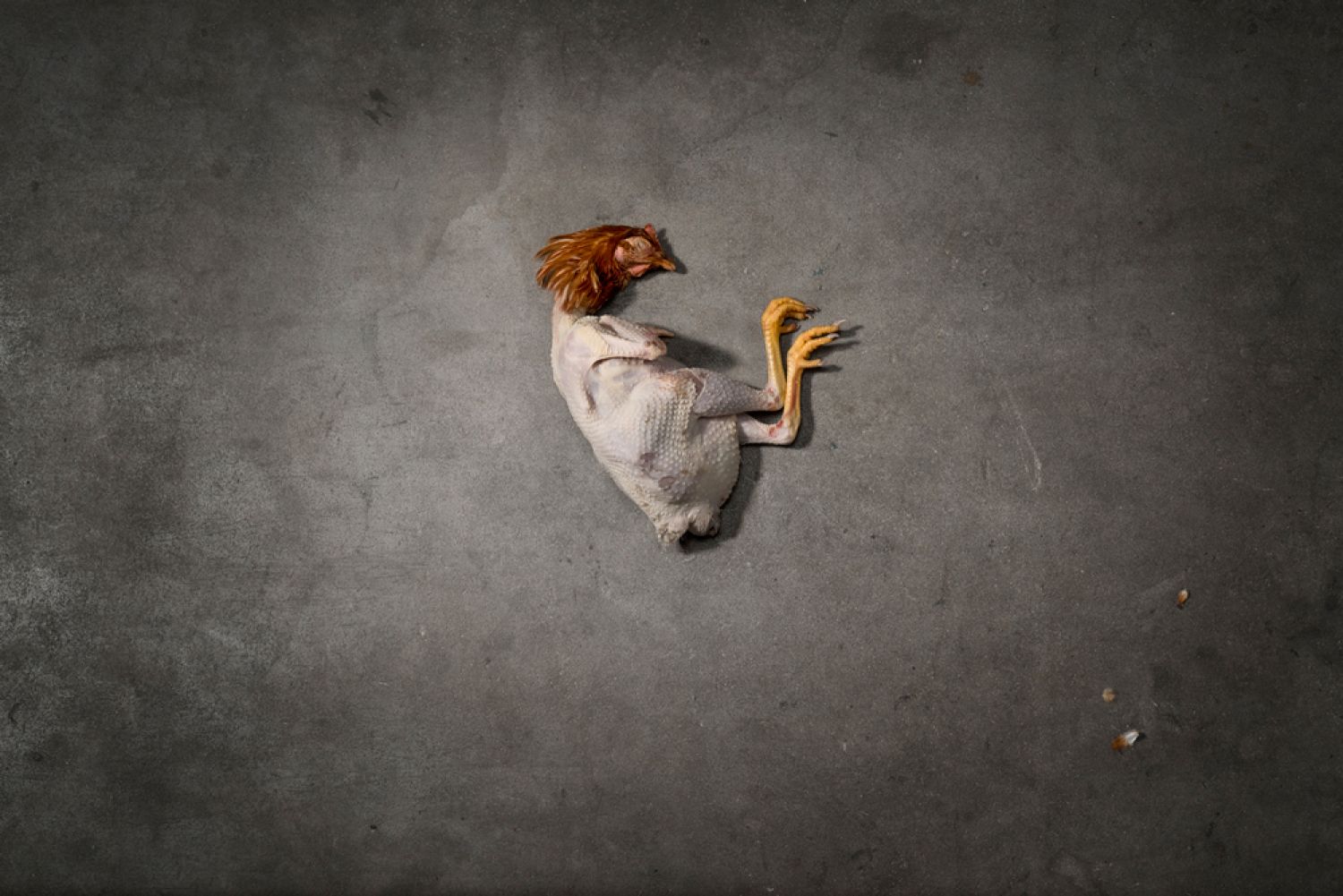
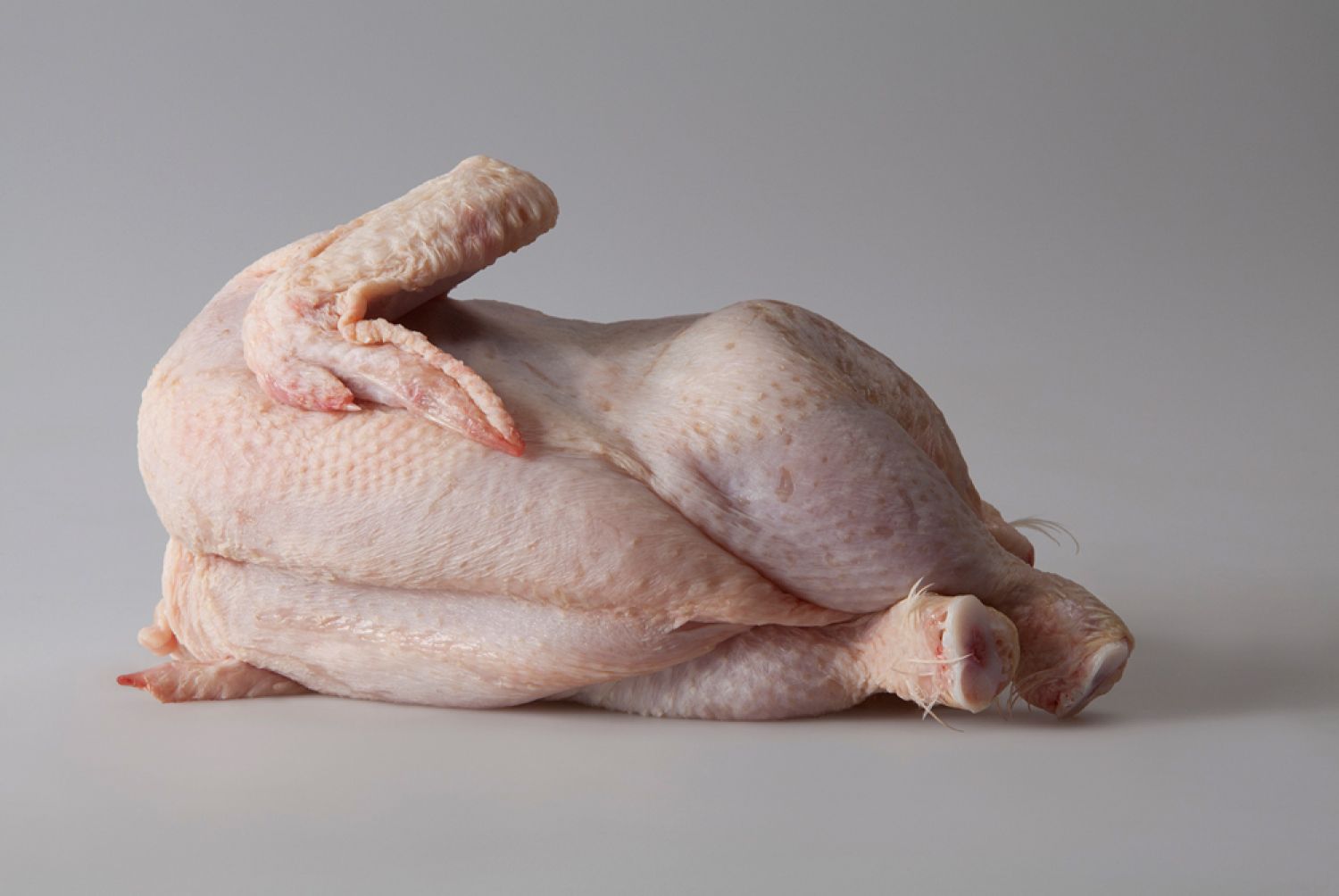
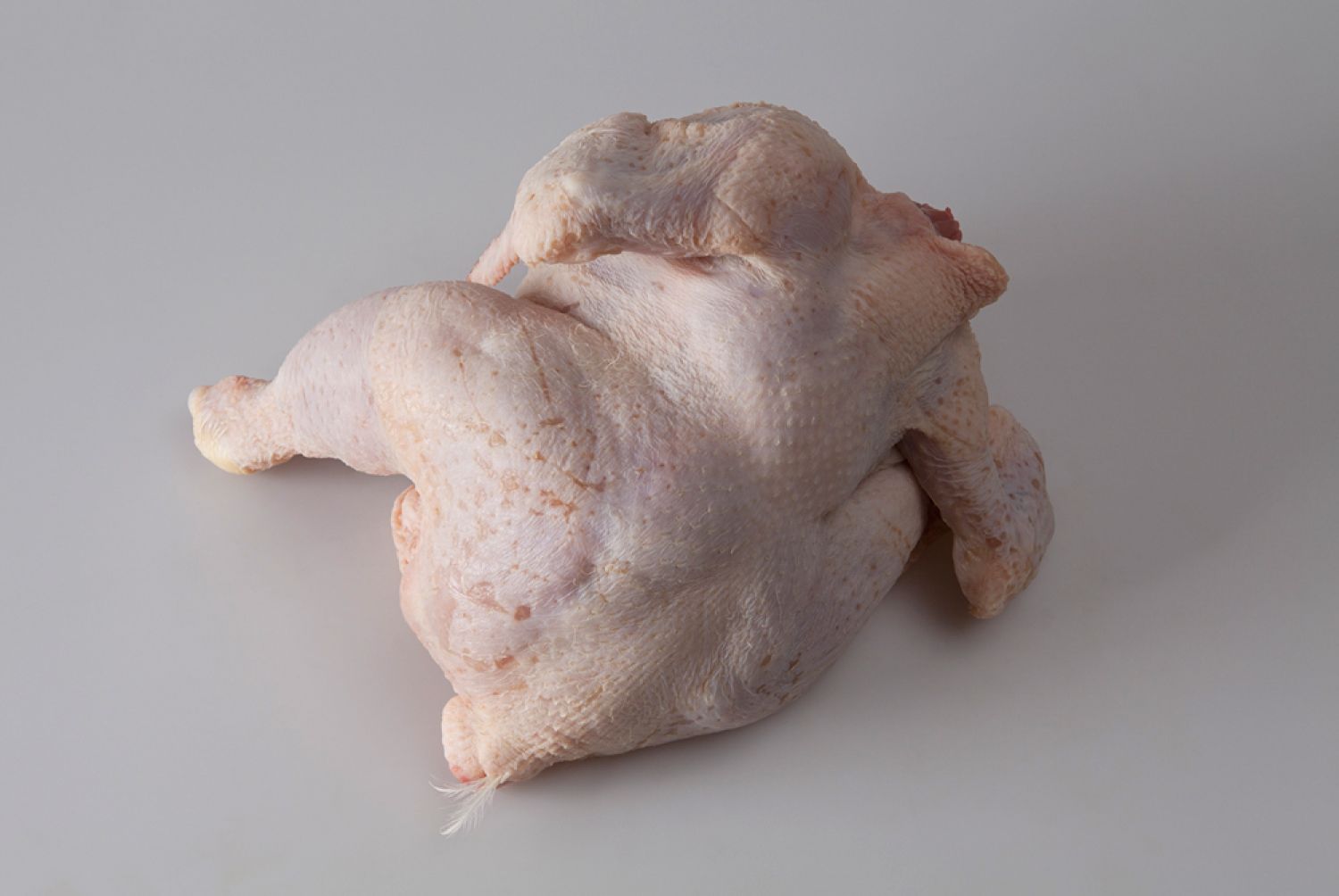
Chicken. The name we give to a bird. Chicken. The name we give to its meat. The chicken’s life and death, the purpose it serves for us, are intertwined in our naming of it.
Helen Pynor’s exhibition, Fallen takes visitors through a suite of photomedia works ruminating on the life and death of domesticated chickens, documenting a long-term artistic study which has traversed the seemingly discrete spaces of farms, supermarkets and laboratories in which the chicken lives and dies, is bought and sold and used to stand in for the lives of others.
The artist purchased a feathered bird direct from the slaughter process in order to make the photographic works that capture the form of the adult bird falling, then gradually, progressively de-feathered and returned to an embryonic form. These photographs capture the lusciousness of the bird’s feathers, in the kind of vivid, painterly detail reminiscent of still-life works of the Dutch Renaissance, but rendered against a cold, concrete background. In this way, her photographs are almost oppositional to the representations of wealth from this pre-industrialised context, from which only the super-rich could boast such luxuries of abundant fruit, vegetables and fowl. Now the chicken is ubiquitous and the most widely consumed meat in Australia, with global trends matching our local preference. In Fallen, Pynor reveals and asks viewers to contemplate the individual bird against an unyielding, hard surface, creating a visual metaphor for the bleak industrial, transitional space for this chicken’s conversion from live animal to meat for consumption.
Opposing this sequence in the exhibition space is another … made in the laboratories of the Max Plank Institute of Molecular Cell Biology and Genetics in Dresden. While our appetite for chicken meat is well known and documented, the use of chicken foetuses in embryology is perhaps less visible. In these contexts, the chicken embryo often stands in for the human, as it poses much less of an ethical, political and religious minefield than working on aborted human specimens or lab-grown zygotes, beyond a few days of growth. Conveniently packaged outside the body in the form of an egg, chicken development at various embryonic phases appears very similar to our own, with two dark eyes, pink bodies and four limbs emerging from rapid cellular multiplication and differentiation.
The recognisable affinity of our shared morphology is evinced by Pynor in these works, as the chicken embryos are shown in the process of literally falling from their gestational sacs, away from the life-giving maternal space and into darkness. Figuratively, the works also point to the darkness that shrouds our own understanding of the industrialised and medicalised use of animals for the continuation and support of our own lives.
It is not easy to contemplate these works without a degree of self-reflection interrupting the act of looking – which is precisely the artist’s intention. How close are we to the sources of nourishment that give us life? How limited is our understanding of death? … Are we comfortable with animals standing in for ourselves? Does recognising chicken subjectivity change our relationship to our most favourite meat? With so much human and animal shared experience rendered invisible by the machinations of our culture, Pynor’s work in Fallen takes us into physical and emotional territory that is usually reserved for people who work behind the scenes to deliver our meat and our medicine.
Bec Dean, Independent Curator
September, 2017
Text extracts from Fallen exhibition catalogue, Dominik Mersch Gallery, Sydney, 2017
Ethics Note
Scientific ethics guidelines were observed in the handling of chicken embryos used in Fallen 12-14. The chicken photographed in Fallen 1-7 was killed at an abattoir and was not killed during the making of this work.
Fallen was assisted by the Australian Government through the Australia Council for the Arts, its arts funding and advisory body.
